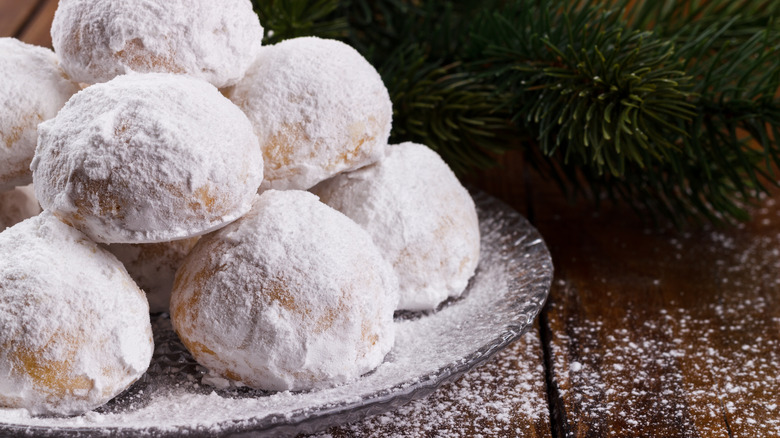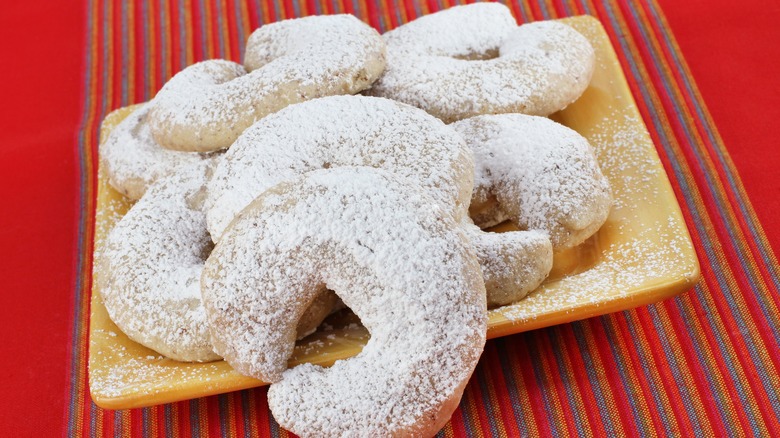Mexican Wedding Cookies Didn't Originate In Mexico
It's easy to jump to the conclusion that Mexican wedding cookies were created in Mexico. The celebratory cookies are, indeed, served at weddings in Mexico. But despite the fairly conclusive circumstantial evidence, you'd be wrong. The fact is, the cookies with misleading names have a surprisingly cross-cultural heritage.
According to the Institute of Culinary Education, history shows similar versions of the buttery orbs dusted in confectioner's sugar have existed for centuries, maybe millennia, all over the world. One of the earliest documented references dates to a medieval Arab cookie made with butter, sugar, spices, and nuts. The recipe for the sweet snacks spread along trade routes from the Middle East to Europe, picking up and dropping ingredients along the way to reflect regional preferences.
Consider Greek kourabiedes. The crescent-shaped butter cookies coated with confectioner's sugar feature strongly at celebrations and are especially popular during the Christmas season (via Food Network). In Turkey, kurabiye (kuru for dry and biye for biscuit, according to the Institute of Culinary Education), are vanilla-flavored butter cookies dusted with confectioner's sugar (via Picnic on a Broom).
A Mexican wedding cookie by any other name
According to the Institute of Culinary Education, food historians believe the recipe for the confections we know today as Mexican wedding cookies probably crossed the Atlantic with Spanish conquistadors in the 1700s. While numerous sources suggest the term Mexican wedding cookie first appeared in U.S. cookbooks in the 1950s, Epicurious cites a 1937 reference in "American Cookery," widely known as America's first cookbook, according to Smithsonian Magazine, in which a reader requested the recipe for Mexican wedding cakes, describing them as "small, round teacakes, rather short, filled with nuts, and rolled in powdered sugar."
Known as biscochitos in Mexico, according to Back Pocket Recipes, the cookies known by so many names around the world do, in fact, play a role in traditional Mexican weddings. They're usually displayed on a dessert bar, in the buffet, or placed on guest tables. And in case you're wondering, if you've ever had a snowball, bullet, Russian teacake, polvorone, sandy, almond crescent, or Napoleon hat, you've probably eaten one of the almost infinite variations of a Mexican wedding cookie (via Jessie Unicorn Moore).

